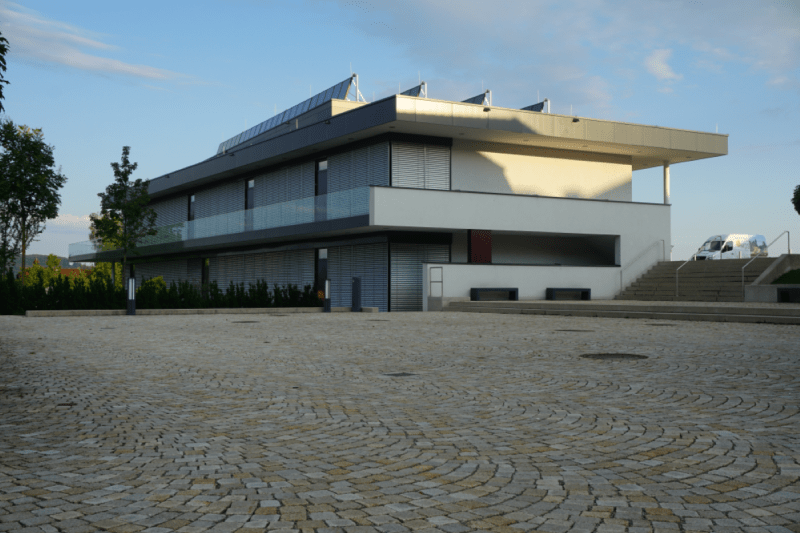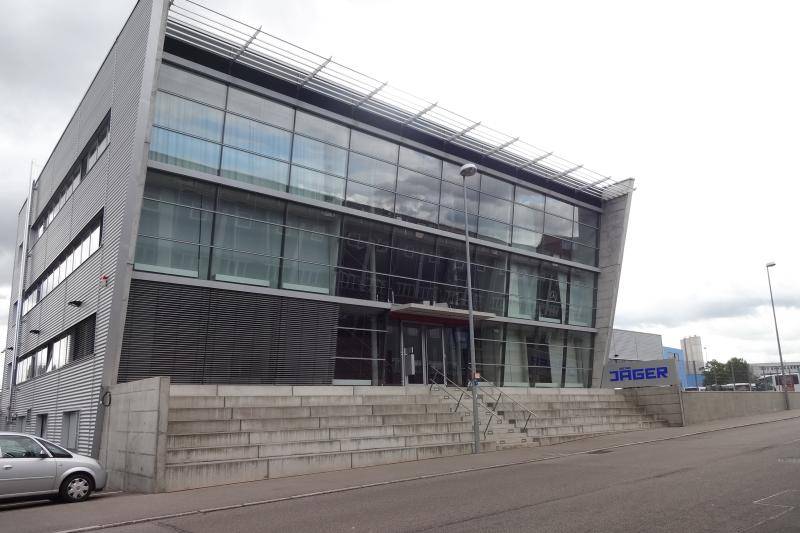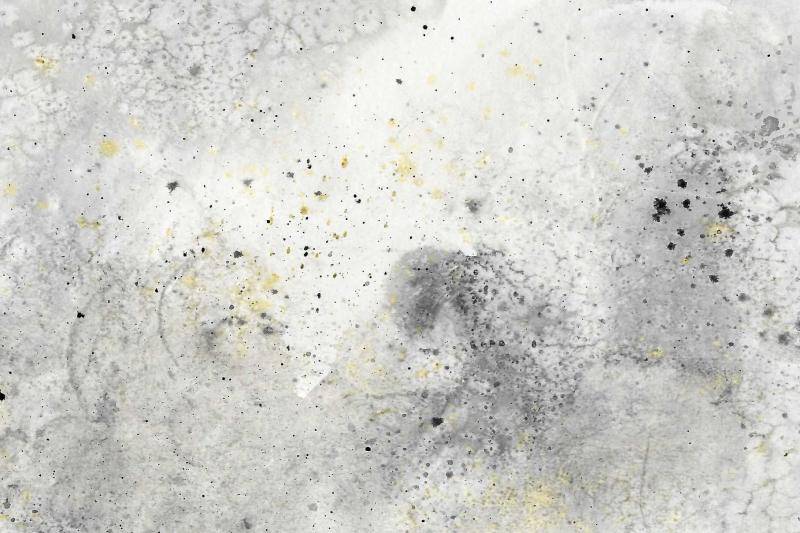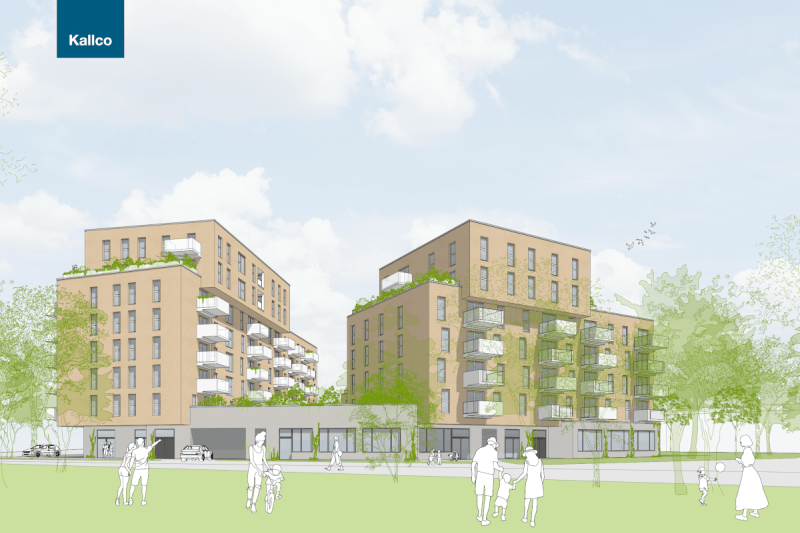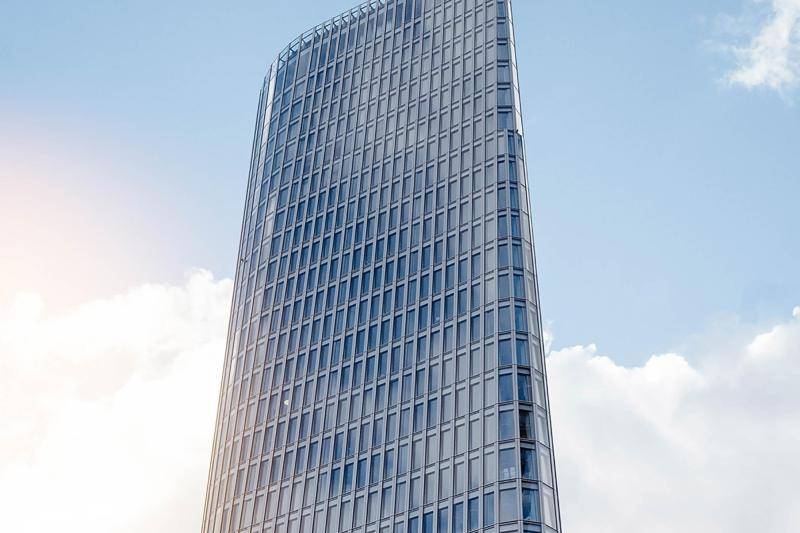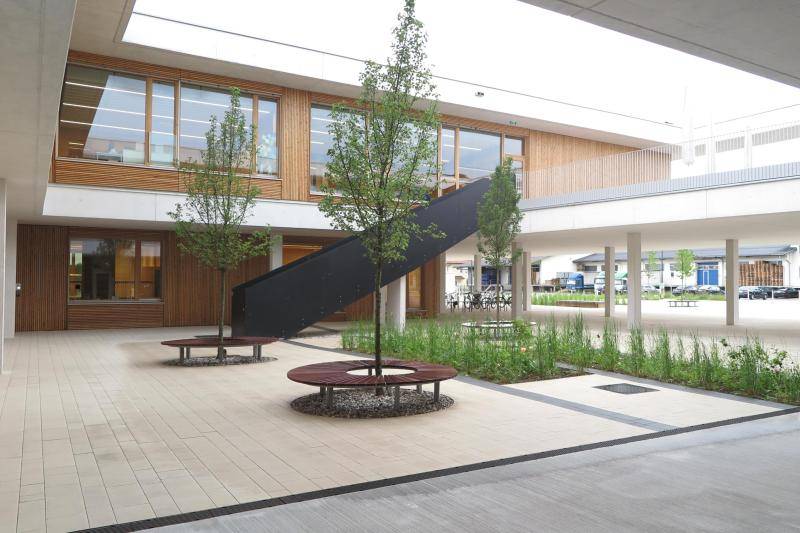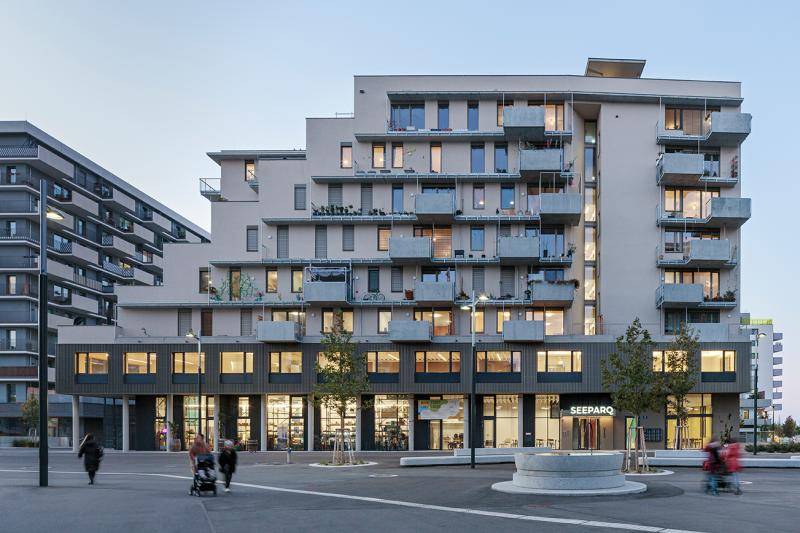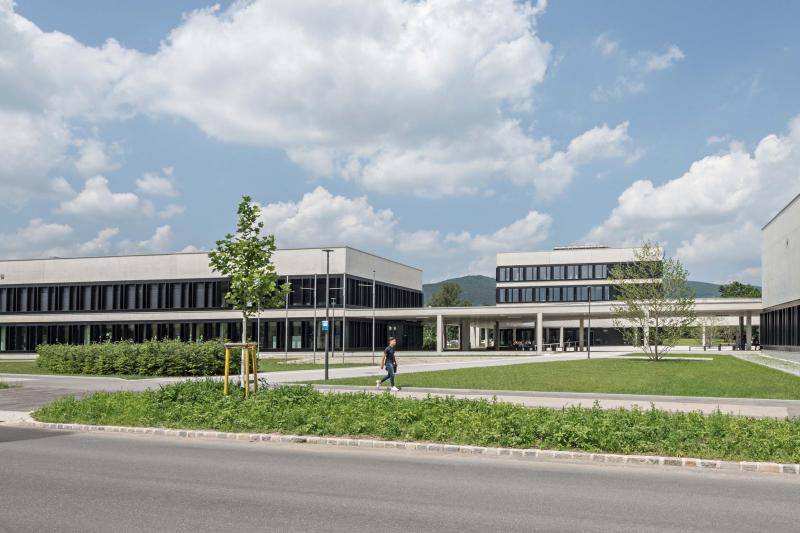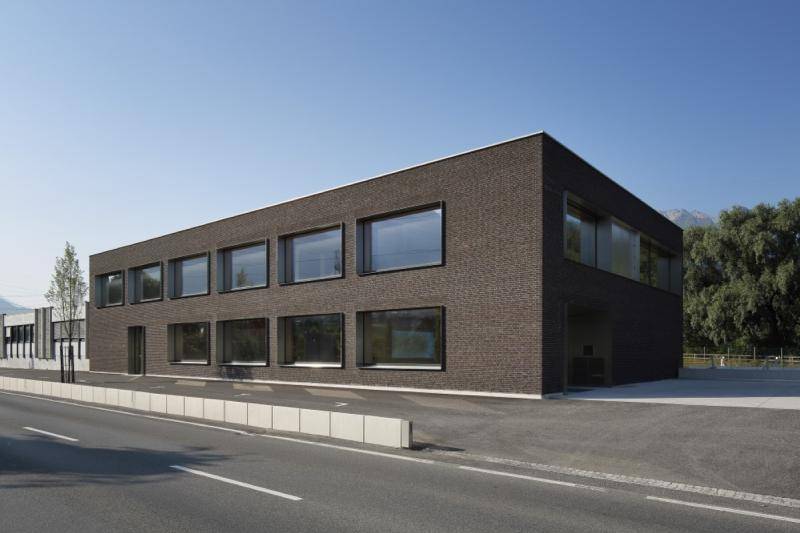Karl Landsteiner private university
In Krems, a private medical university was built according to the plans of Delugan Meissl Associated Architects, DMAA, in collaboration with Vasko+Partner. Karl Landsteiner, an Austrian Nobel Prize winner for medicine, is the namesake for the building with component activation and concrete as the main building material.
state of Niederösterreich
2016
general planning: Vasko+Partner
project management: Hypo NOE Real Consult
9.489m²
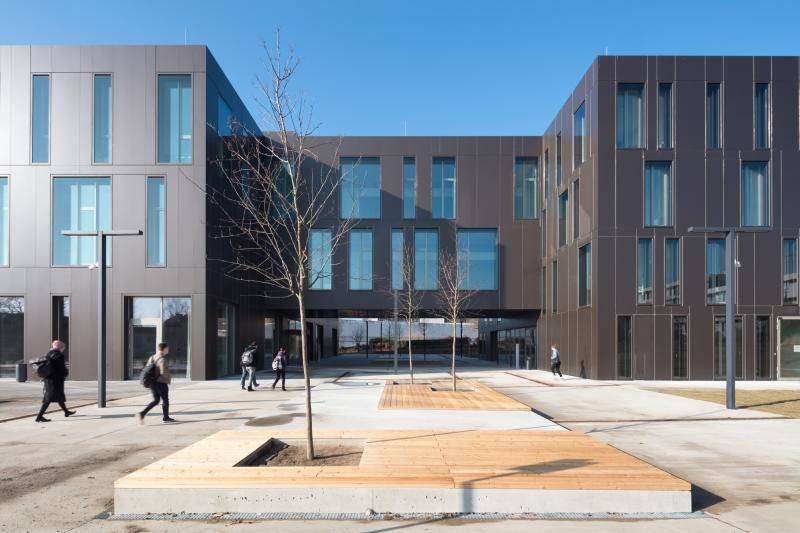
The new building of Karl Landsteiner Private University was awarded the klimaaktiv plaque "Gold" as an outstanding example of sustainable construction. The new building project at the Krems campus achieved an outstanding 988 out of a possible 1000 klimaaktiv points. Energy efficiency was a key success factor and was ensured, among other things, with component activation, heat pumps and efficient heat recovery. This ensures a stable indoor climate all year round and a high level of comfort for users. The requirement for an ecologically and health compatible construction of the building was fully met. At the same time, the building was certified according to DGNB/ÖGNI and received the platinum sustainability certificate in the highest possible award.
The new university building has a gross floor area of 6,600 square meters - on a site size of around 16,000 square meters. "The geometry of the new building is based on the building lines, but is divided into two structures, which are connected by a two-story bridge," the architects explain their concept. Due to its positioning and formal design, the building forms the prelude to the new campus area and is conceived as an integral part of the future overall ensemble.
(Text: Gisela Gary; Z+B magazine; in shortened form)
